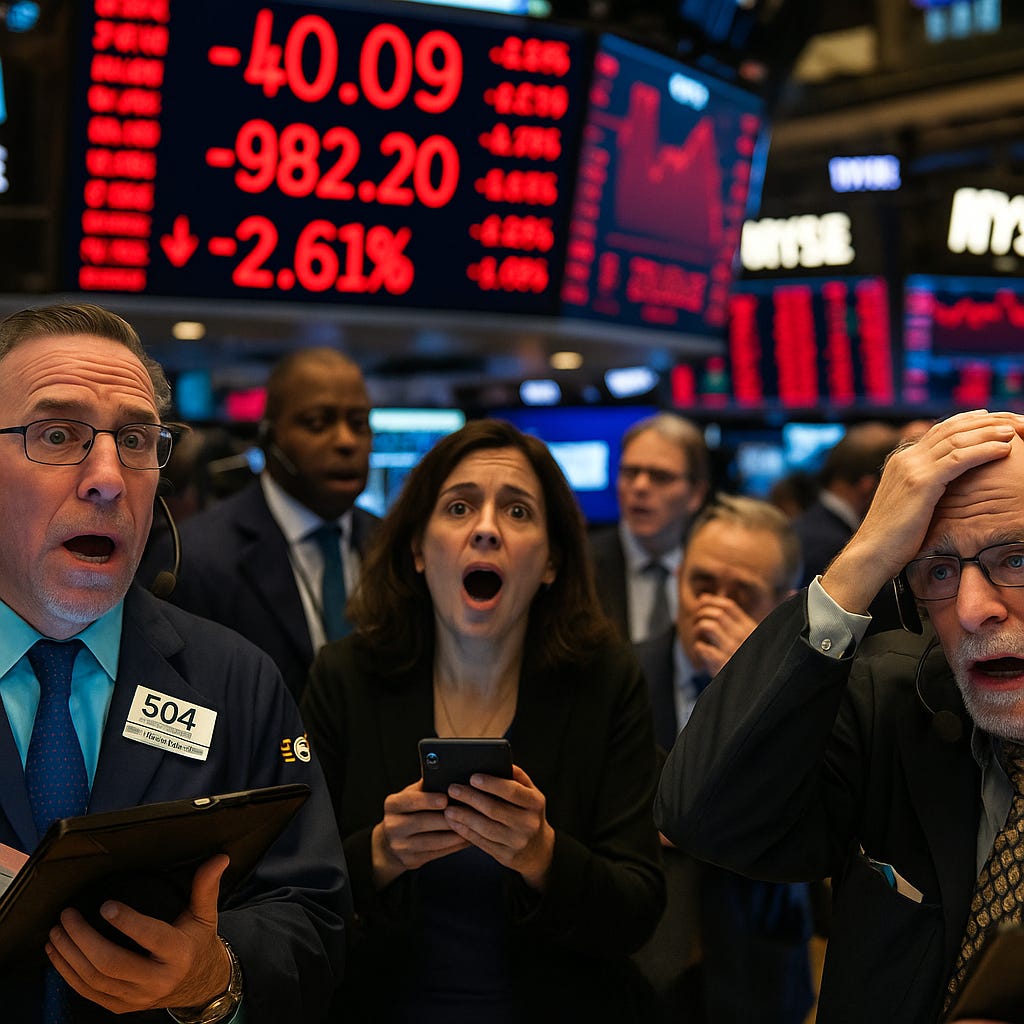The Market Is Tipping Toward Trouble
And Student Loans, Housing, and Auto Cracks May Speed Up the Fall
The stock market has been climbing for months. Retail traders keep buying every dip, and headlines are full of optimism. But underneath all that excitement, there’s growing evidence that this rally might be living on borrowed time, and borrowed money.
One of the most respected technical analysts in the financial world, Tom DeMark, has issued a serious warning: the market is dangerously close to a major reversal. DeMark, whose market timing models are followed by some of the world’s top investors, sees signs that the S&P 500 is nearing exhaustion. His research suggests that when markets keep rising on good news, they often hit their top just before that news starts to turn.
That’s the situation we may be in right now. The S&P 500 has been hovering near its highs, but if it breaks below 4,835, the intraday low from earlier this year, it could signal the start of a bear market, defined as a 20 percent decline from recent peaks. Adding to the concern is the market’s behavior around the 200-day moving average. This long-term trend line acts like a pressure gauge. If the market drops below it and fails to recover, it’s often a signal that the broader trend has flipped from growth to decline.
While institutional investors and hedge funds are quietly pulling back, retail investors are still aggressively buying. That imbalance could prove dangerous if the market starts to roll over and panic sets in.
And it’s not just technical patterns or investor behavior signaling trouble. The real economy is flashing warning lights too.
After a three-year pause, student loan payments are back and hitting millions of American households hard. These aren’t small payments. For many, they’re several hundred dollars a month being pulled out of their budgets and sent back to lenders. That’s money that’s no longer being spent on groceries, dining out, travel, or even investing. With household savings depleted and credit card balances at record highs, this pressure couldn’t be returning at a worse time.
Meanwhile, the housing market is starting to buckle under the weight of high interest rates. Mortgage applications have plummeted. First-time homebuyers are being priced out completely, and even investors are pulling back from new purchases. In many markets, prices have stalled or started to slide, especially where pandemic-era booms pushed valuations far beyond sustainable levels. If layoffs increase or consumer confidence drops, the decline in home values could accelerate, dragging down household wealth and consumer sentiment with it.
The auto market is flashing similar signs of strain. Car prices remain stubbornly high, but loan delinquencies are rising fast, especially for subprime borrowers. More and more Americans are falling behind on their car payments, and lenders are tightening credit in response. It’s a vicious cycle. Fewer approvals, lower demand, and rising repossessions all point toward a market that’s losing steam.
Put all this together, a stock market clinging to a fragile technical level, consumers squeezed by debt payments, and the two biggest household assets (homes and cars) showing signs of stress, and it’s not hard to see why some analysts are sounding the alarm.
None of this guarantees a crash, of course. Markets are unpredictable, and sentiment can shift in surprising ways. But the combination of overheated valuations, exhausted momentum, and rising economic pressure is hard to ignore.
If the S&P 500 fails to hold its 200-day moving average, and if student loan payments, housing weakness, and auto loan defaults continue to mount, the market may not just correct. It may unwind.
The time to prepare isn’t after the fall begins. It’s now.




